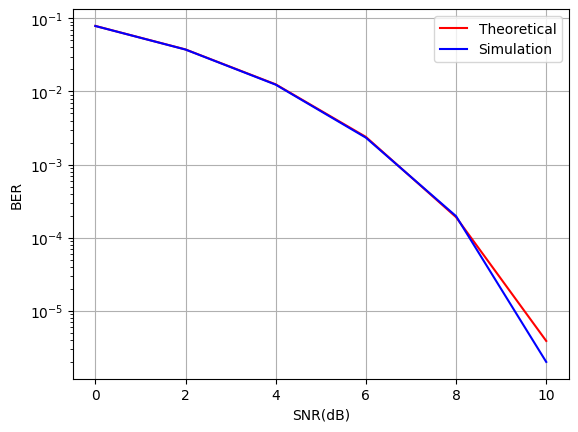# Theoretical results $BER = Q(1/\sqrt{2SNR})$
import numpy as np
import math
SNRdB = 10
SNR = 10**(SNRdB/10)
R = 1 # rate of the code
BER_th = 0.5*math.erfc(math.sqrt(SNR))
# Implementing the simulation
N = 1000000
msg = np.random.randint(0,2,N)
s = 2*msg - 1
r = s + np.sqrt(1/2/R/SNR)*np.random.randn(N)
msg_cap = (r > 0).astype(int)
BER_sim = np.mean(msg != msg_cap)
print(f"BER theoretical = {BER_th}", f"BER simulation = {BER_sim}", sep='\n')BER theoretical = 3.872108215522037e-06
BER simulation = 5e-06